As mentioned in the ‘Achilles tendon of the shoulder’ chapter, the long biceps often participate in our eyes with shoulder pain, especially in rotator cuff tendinopathy. This suffering can be specified by complementary examinations (ultrasound, MRI) but frequently the pain is specified on the path of this tendon without any anomaly to the exams.
Clinically the symptoms are unfortunately not very specific, but well localized pain in the bicipital groove, reproduced or aggravated by the palpation of this gutter are still evocative. The clinical tests (Palm up test or Yergason test) are painful in a very inconsistent way.
This tendon presents several paths, intra-articular then in its gutter and finally under the gutter. the only reproducibly identifiable abnormalities are located in the bicipital groove and in the joint if its insertion is torn off or if it is split (beware there are variants of the normal one with a non-diseased tendon).
The initial treatment is medical and is similar to that of a tendonopathy of the cuff (periarthritis) because of its promiscuity with the anterosuperior cuff (superior subscapularis, rotator interval, supraspinous anterior). A decoding work of the humeral head can indeed relieve pain related to inflammation of the tendon, sometimes aided by infiltration into the bicipital groove.
Anyway in case of failure of the medical treatment the respect of this tendon (according to us) during an intervention concerning the tendons of the cap exposes the patient to the persistence of a part of the felt pains or at the appearance later (sometimes short-term) new pain.
However, the honesty leads us to point out that some (fortunately) patients operated on the tendon biceps either by tenotomy or tenodesis continue to feel pain sometimes very close to those felt before the operation, which explains why some surgeons have no systematic attitude.
The long biceps tendon has an ideal path with 2 fixed points:
– at its point of origin on the supra-genoid tubercle and on the upper bead,
– the bicipital groove through an orifice limited by the transverse ligament (in close connection with the upper fibers of the subscapularis tendon and may also be with the anterior fibers of the tendonsupraépineux) and the coracohuméral ligament.
During a trauma or more often a progressive wear (degenerative), the elements stabilizing this long biceps can miss, causing an instability of the long biceps, which, becoming more mobile ‘rubs’ during the movements which causes an inflammation or sometimes what makes the tendon immediately embarrassing.
What pathologies can cause instability of the long biceps?
In his insertion we quote the famous SLAP lesions (see dedicated chapter).
At the level of the gutter it is traditional to look for a partial lesion (of the deep face) or total of the tendon under scapular.
The lesion of the subscapularis may be the cause of the instability of the biceps sometimes it is only the consequence, for example during an effort of brutal lifting of heavy load the biceps solicited can come to dilate the subscapularis and thus create one’s own instability afterwards.
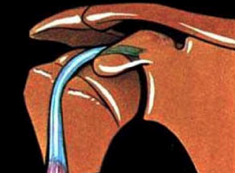
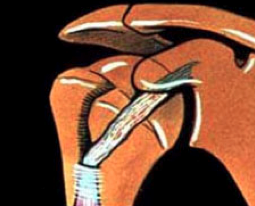
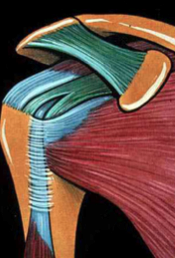
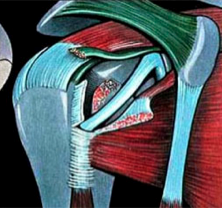
The treatment of such instability (equivalent for the patient to tendinitis of the biceps) is that of a tendonitis, but the prognosis of the medical treatment is often very bad in particular by the very painful character see impossible of the reeducation or the inefficiency infiltration.
In our eyes this may be the reason for a surgical intervention whose purpose is either to stabilize the biceps (possible on its insertion) or to achieve a tenotomy or a tenodesis (also if the lesion concerns the bicipital groove).
Break of the long biceps
What happens in case of isolated spontaneous rupture of the long portion of the biceps?
In isolation, it usually follows an accident, excessive load bearing or trauma.
There may be appearance of a muscle of Popeye, painful at the beginning (muscle contracture, cramps ..) as well as the appearance of a blue (bruise). In general the evolution is favorable in a few weeks, sometimes requiring physiotherapy to relieve.
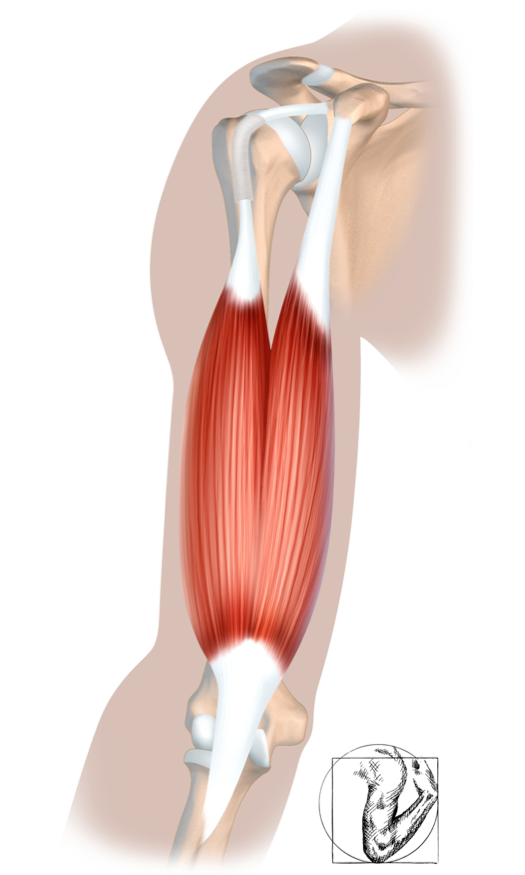
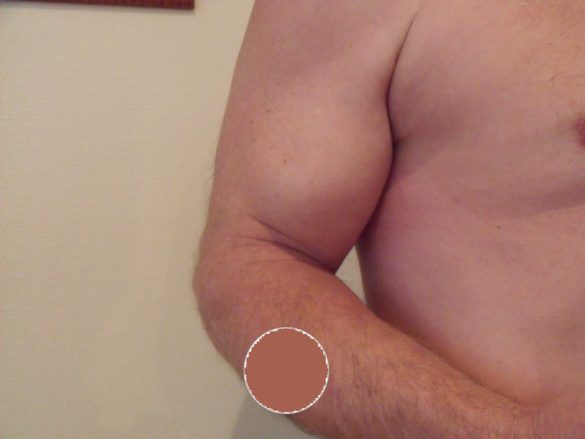
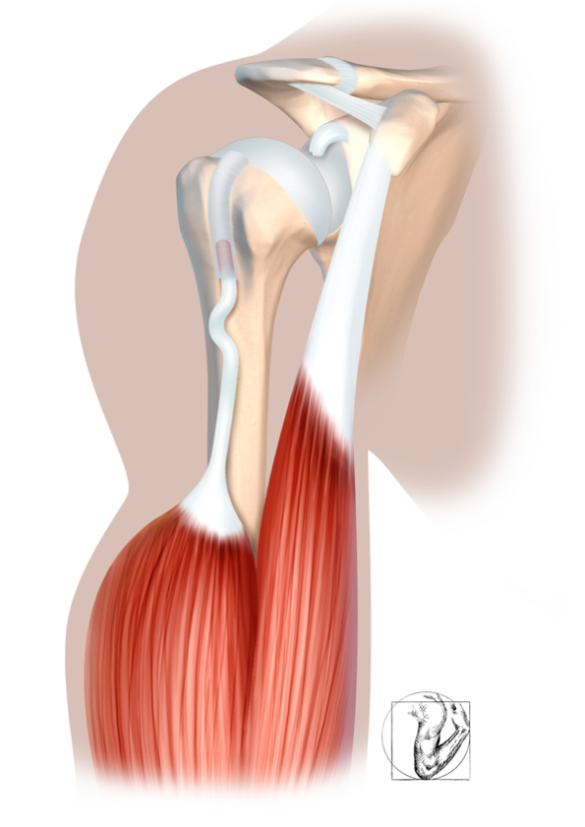
Tenotomy of the biceps
Tenotomy is the section of the long biceps tendon flush with the upper bead in the shoulder. that in general retracts into the anterior box of the arm and can result in a non-exceptional way (especially in humans, depending on muscular volume and arm morphology) to a muscle ball nicknamed ‘Popeye muscle’, corresponding to the fleshy body muscle of the long portion of the biceps. the biceps having 2 tendons (see anatomy), there is no loss of flexion of the elbow because the muscular body dependent on the short portion of biceps still works but also the main flexor muscle of the elbow (the anterior brachialis muscle) is unhurt.
In the forced worker it is possible however that there is a small loss of strength related to this rupture or that muscle pain on the retracted bundle (stabbing or cramping) remain troublesome a few weeks to month, usually these symptoms disappear with time.
Tenodesis of the long biceps tendon
Tenodesis is the fixation of a tendon (on another tendon or on a bone). The tenodesis of the biceps is to fix the tendon of the biceps on the humerus in the bicipital groove or underneath. The first step is a tenotomy as explained above then the tendon:
is most often fixed by means of an anchor identical to a tendon reinsertion of the cap (see chapter),
or introduced into a bone tunnel and fixed in the gutter by an ‘interference’ screw (a technique commonly used to attach a cruciate ligament to the knee), a technique used by Dr. GUINAND, see video.
or still stuck in a bone hole under the gutter after having sutured into a ball on itself (technique of ‘keyhole’ popularized under arthroscopy by Dr. KANY, see video keyhole tenodesis)
The indications are still debated between surgeons, whether on the need to perform a gesture on the biceps tendon and whether a gesture is decided that it is a simple tenotomy or a tenodesis.
We can summarize our philosophy as follows:
Systematic response during an intervention concerning rotator cuff tendinitis with or without tendinous lesion or perforation, or during instability of this tendon.
No strict tenotomy / tenodesis rule, but tenodesis is considered for the forced worker or patients with a higher risk of Popeye effect.
The vast majority of patients who have been treated are relieved of their painful symptoms in both techniques, but there are patients equally in the two groups who remain genital on the tendon route or by muscular pains.
Benefits of Tenodesis:
- persistence of a lowering effect of the humeral head (importance mainly in the case of completely unrepairable cuff). Interest discussed …
- decreased risk of Popeye muscle (cramps, muscle pain, muscle retraction)
Disadvantages of tenodesis
- cost when using an anchor or screw
- duration of realization during a repair of tendons of the rotator cuff (intervention already long …)
- sometimes remains painful …
